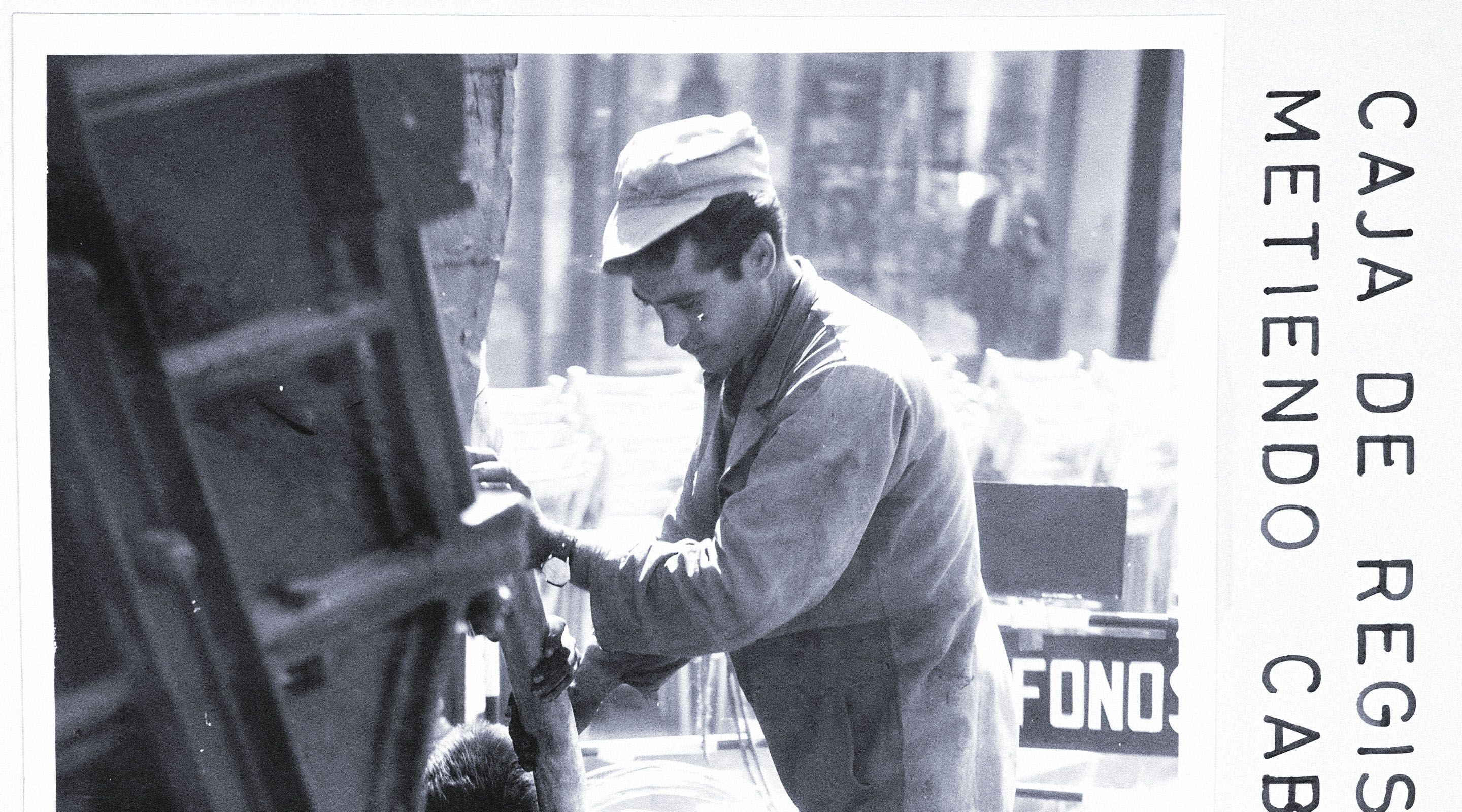
1970
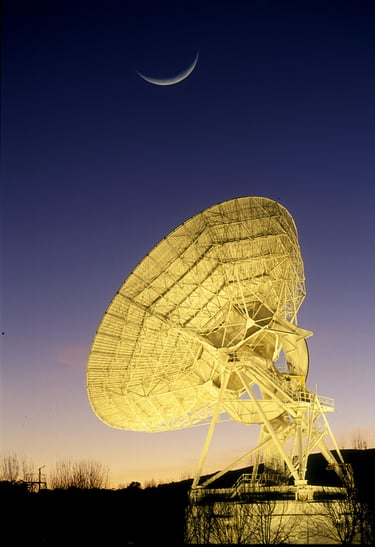
We continue to move forward in the automation process and for the first time our networks are starting to carry data as well as voice, and submarine cables are becoming essential. The workforce continues to grow to take on these new services.
General Automation Plan
01
In 1970 we drew up the General Plan for Automation, which will be a priority in this process and will have an impact in that year and the following years. As a result, four years later, all fifty provincial capitals now have automatic interurban exchanges. Moreover, this Plan implied a significant change of model. From this moment on, Telefónica took over the direct operation of all its telephone centres, paying 3,700 pesetas in compensation, as well as integrating 1,400 people into the payroll. Previously, a system of own centres and contracted or family-run centres coexisted.
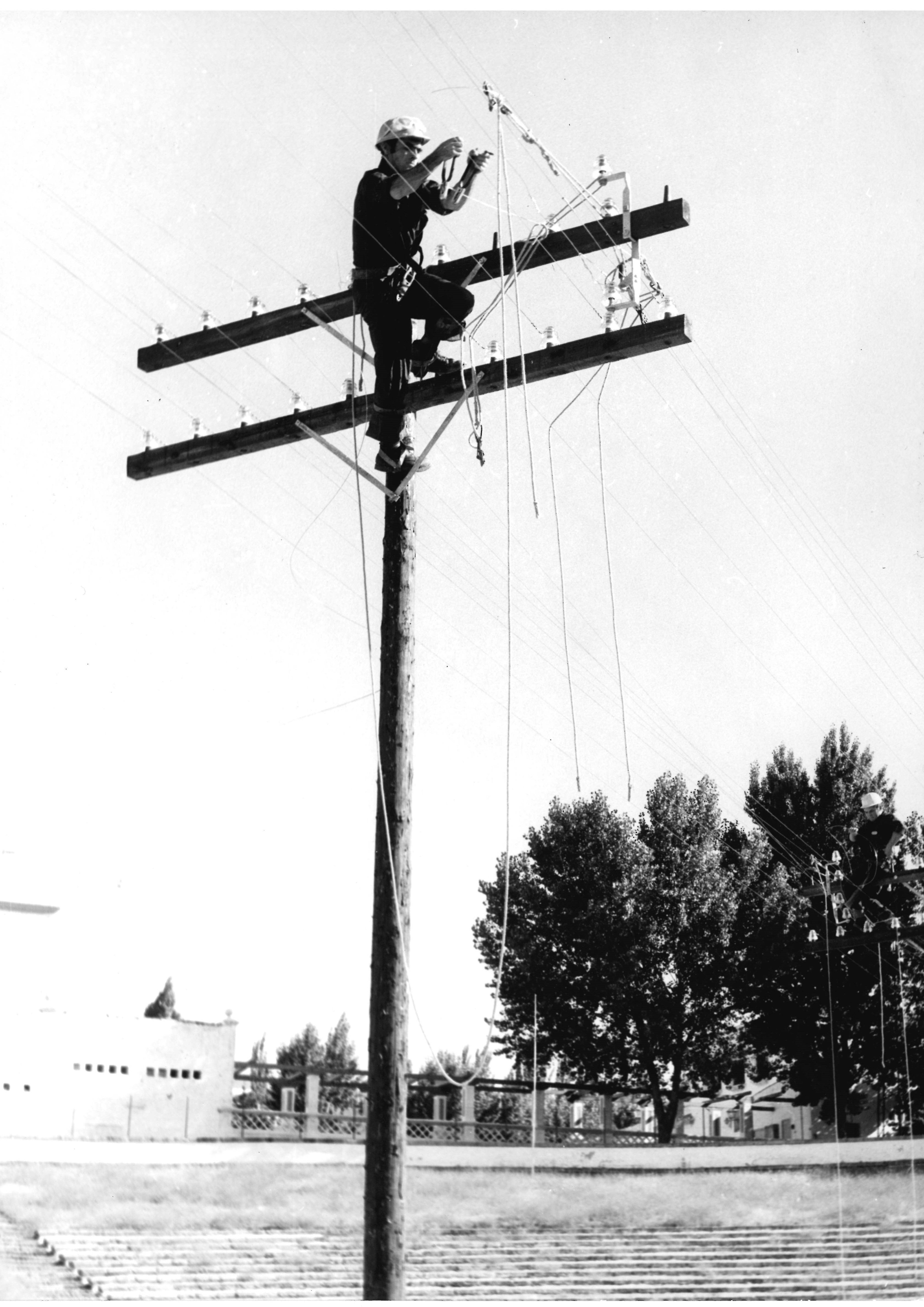
We incorporate Entel and a key service: data transmission
02
Following a government decision, and without preamble, a decree ordered the National Institute of Industry (INI) to transfer all the shares of the public company Entel (Empresa Nacional de Telecomunicación, oriented towards international communications) to the Telefónica Company, as well as the right to exploit coastal and maritime services. In addition, it entrusts Telefónica (a key point for the future) with the operation and development of the public data transmission service and the general and special services for the transmission of information (telegraph and telex messages are expressly excluded). Telefónica is thus left alone in the telecommunications market, with the state renouncing competition in this sector. And it pays 531.5 million pesetas (3,194,379 euros) for Entel, plus another 193 million pesetas (1,159,953 euros) for various concessions held by the state. Another INI subsidiary, Empresa Nacional Radio Marítima, goes to Telefónica for 241 million (1,448,439 euros).
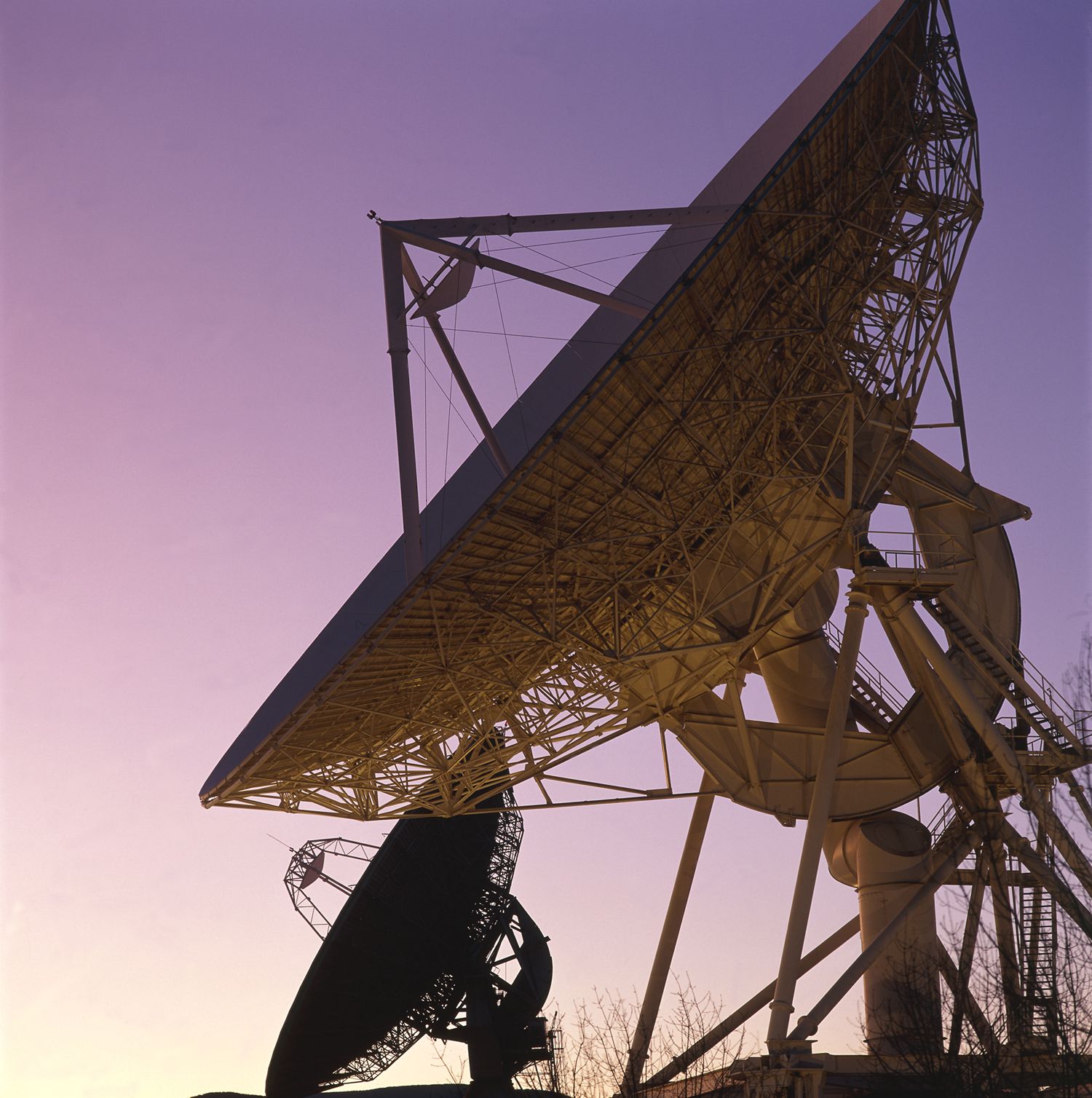
A boost for submarine cables
03
The first Spanish submarine cable, PENCAN-1, was installed in 1965 between San Fernando (Cadiz) and Santa Cruz de Tenerife (1,390 km. in length). But it was in 1970 that a good submarine cable network was put in place, with major improvements. The TAT-5 cable, which we operate through a consortium of companies, and which is laid by AT&T between Green Hill in the state of Rhode Island and Conil on the Cádiz coast, incorporates transistorised repeaters, which allowed for improved transmission and a six-fold increase in the number of channels of previous versions. This transatlantic system, with 845 telephone circuits, was completed with a radio link between San Fernando and Sesimbre, in Portugal, and with another that covered the distance to Estepona (Malaga), where it connected with the new MAT-1 Mediterranean cable, with a stopover in Barcelona. One end moored at Palo (Italy) and had a capacity of 640 circuits. It allowed traffic to be routed directly from the United States to Italy, and was jointly operated by Telefónica and Italcable.
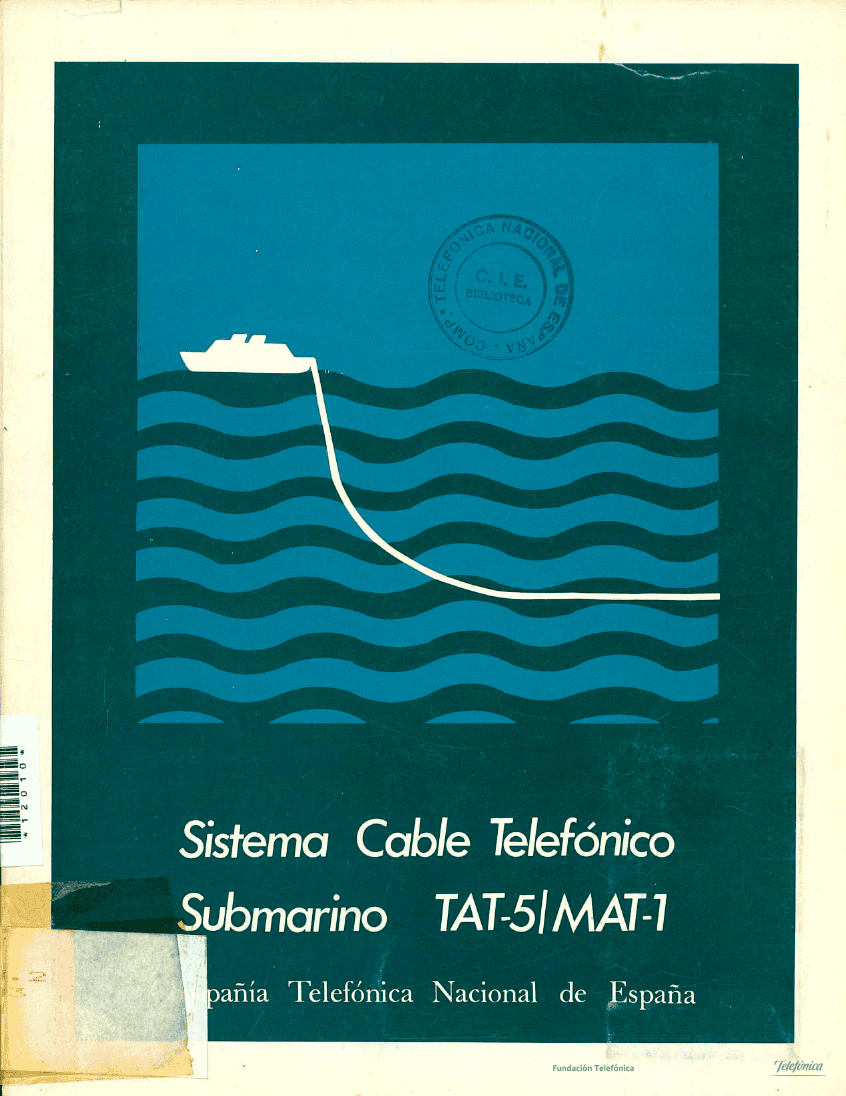
Shareholders are a priority: three offices and special insurances for shareholders
04
In 1970, on the 25th anniversary of Telefónica's majority state ownership, three of the shareholder's offices were already open (Madrid, Barcelona and Bilbao). We maintained daily contact with them and even offered them, at an "adjusted cost", a shareholder insurance covering accidental death and disability based on the nominal value of the shares. Individual investment plans were also created for modest savers, allowing for regular contributions and an absolute degree of liquidity.
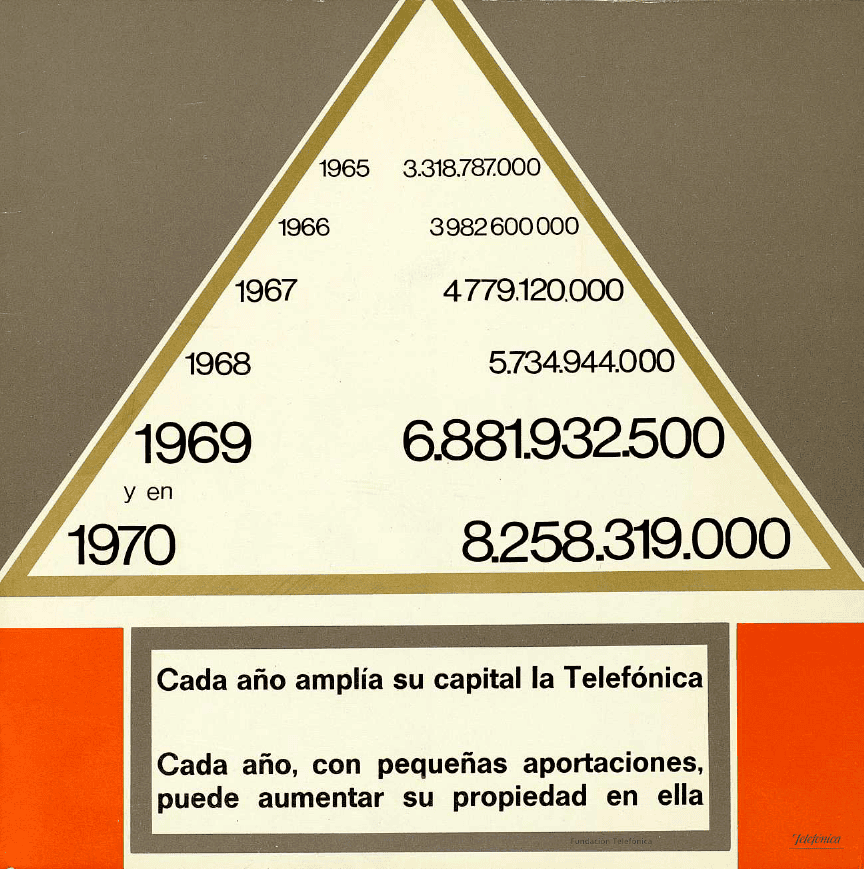
Fire in Gran Vía 28
05
In the middle of summer, in the mid-afternoon of 10 August 1970, Telefónica's headquarters suffered a major setback. A fire engulfs the basement, destroying much of the general archives. Twenty operators had to be evicted, while more than 400 workers were able to remain in their jobs. The smoke made it difficult for the fire brigade to extinguish the flames, but they were quickly on the scene.
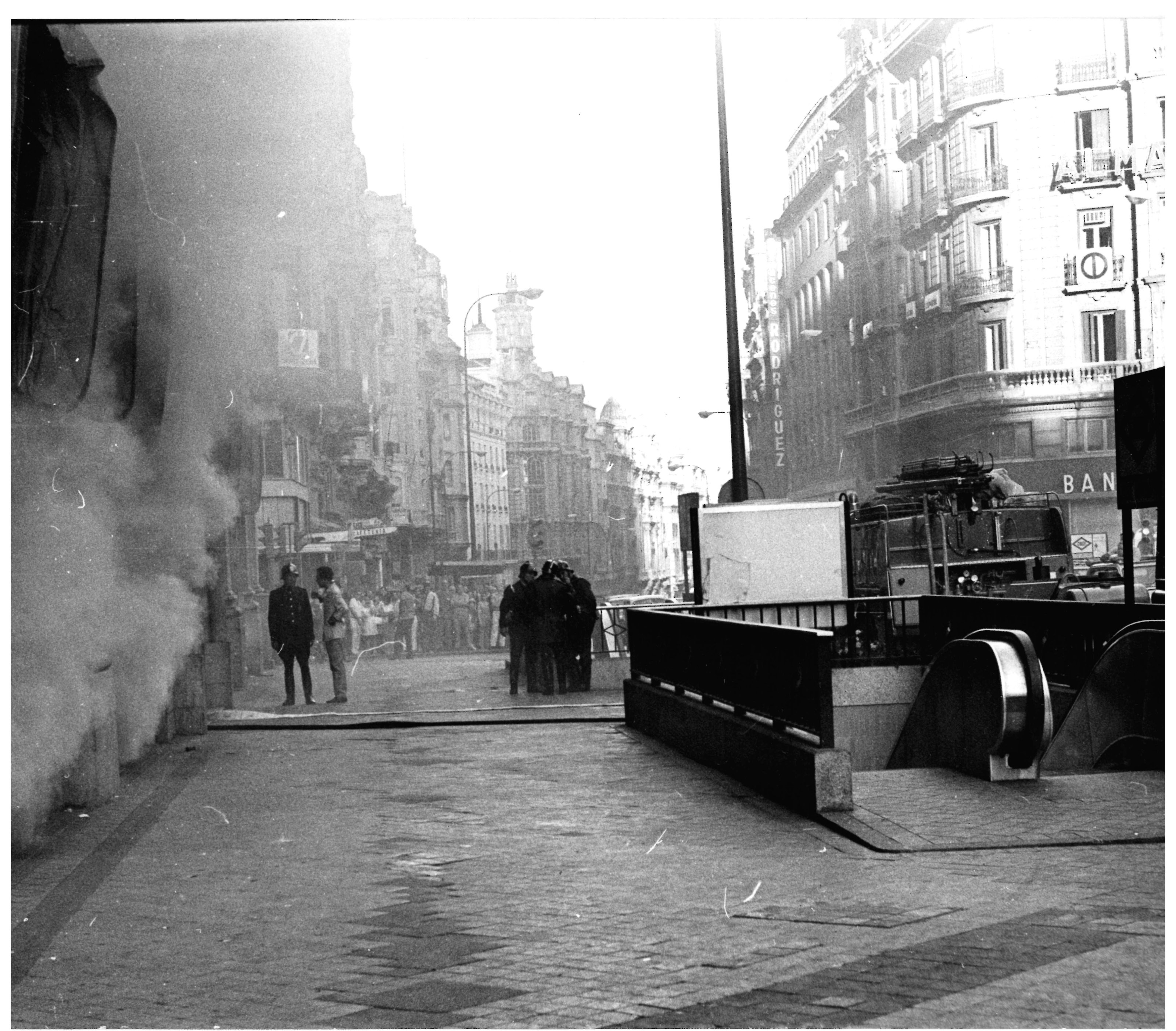
Do you have doubts about what happened?
Ask Aura